



Clean enzymatically treated protein is also the protein of choice for starter feed in Asian poultry production
Often, the effectiveness of ingredients and additives for chicken feed is shown under poultry production conditions typical of western markets such as Europe or the United States. However, Asia-Pacific accounts for the largest share of the global chicken meat market in 2020. Furthermore, the poultry production in this region is projected to register extraordinary growth during the next decade, the projected growth being attributed to quickly rising population, substantial economic development and therefore, upsurge in the purchasing power of people.
Although intensive poultry production systems also go through a process of globalization, becoming increasingly similar in different world regions, there may be still notable differences in many aspects of chicken production between the Asia-Pacific region and Western countries. Thus, Hamlet Protein A/S (Denmark), the only producer of enzymatically treated soy protein (ESP) in the World, is committed to carrying out field and experimental trials with chickens in various countries of the region. In this article, the main results obtained with ESP in chicken starter diets in Asian research centers are presented.
The positive effect of ESP inclusion in starter diets on the performance of chickens has been widely demonstrated in various trials in Asia. Thus, ESP was shown to be more effective than a hydrolysate from porcine intestinal mucosa in a trial with Cobb 500 broiler chickens carried out in collaboration with a feed mill in Silang (the Philippines) in 2015, ESP showing the highest production efficiency factor (Table 1).
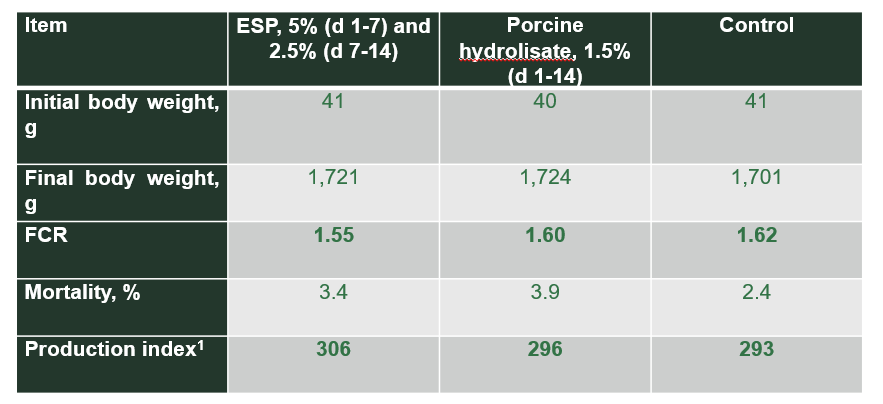
Likewise, in another trial carried out at Khon Kaen University in Thailand in 2017, the efficacy of ESP in starter diets was compared to the same porcine hydrolysate and two other protein sources (fish meal and fermented soy) using Cobb 500 chickens. ESP-fed birds showed significantly lower FCR than the control group and the other protein sources’ groups (Figure 1). The positive effect of ESP on the conversion rate of broiler chickens was again demonstrated at the same Thai university a year later (2018). This time, ESP was administered to Ross 308 chicks in two distinct phases (1-10 days or 1-21 days) with / without BMD in the diet. For the overall study (1-42 d), results showed evidence that overall FCR values obtained with ESP (1-21 d), with or without BMD, were similar to those observed with BMD alone and significantly better than FCR in the control group (Figure 2).
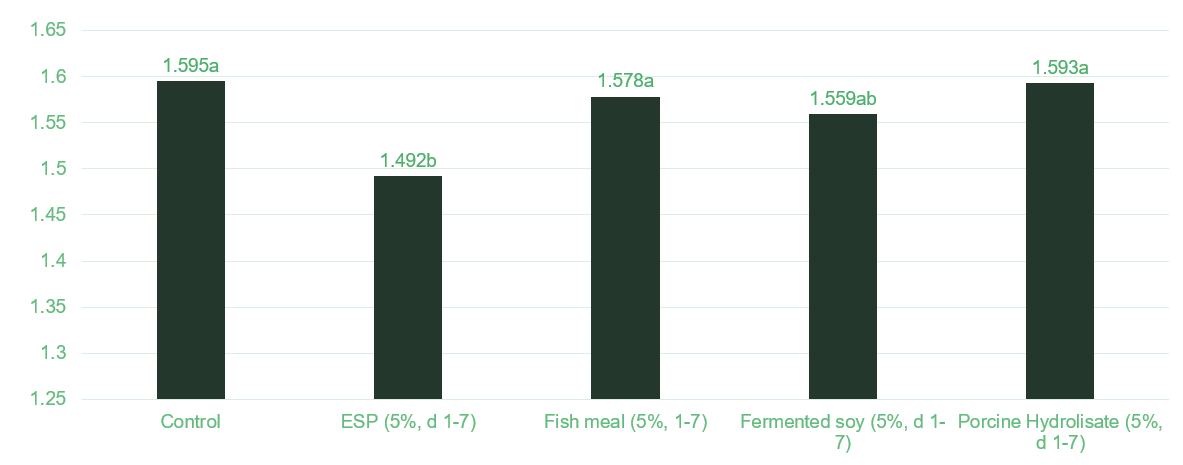
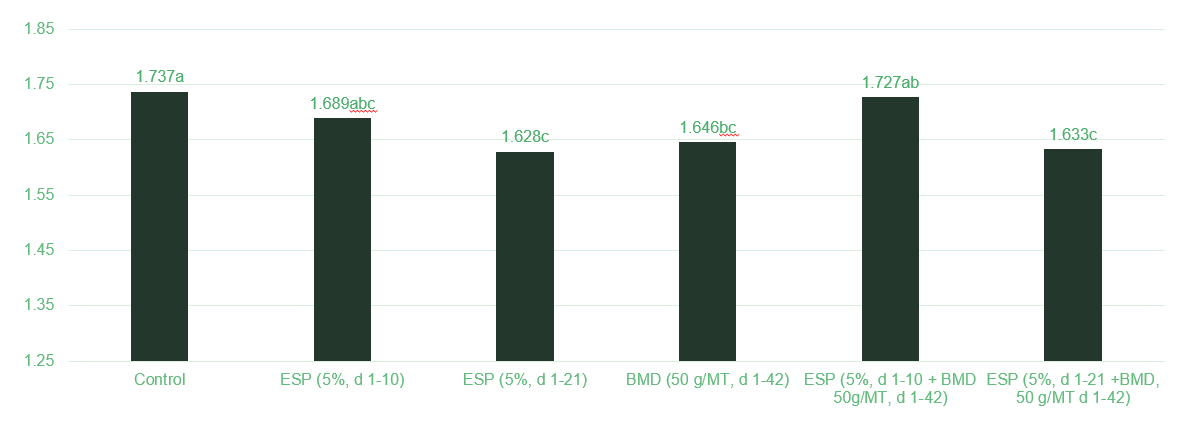
The superiority of ESP in FCR has not only been demonstrated in white chickens but also in Asian colored feathered breeds such as Luong Phuong. In 2016, a trial with this type of colored feathered birds was carried out at Nong Lam University (Vietnam). Four inclusion levels of ESP were tested during the starter phase: 0%, 2.5%, 5% and 7.5%. The trial showed a significant linear effect of ESP inclusion in the starter diet (1-28 d) on FCR during the growing period (28-60 d), demonstrating the carry-over effect of the use of ESP in colored feathered chickens (Figure 3). Furthermore, the addition of ESP in the starter feed increased villus height/crypt depth ratio (VH:CD) in the small intestine at both 28 and 60 days (Table 2), while a significant correlation was observed between a well-developed gut (high VH:CD) and low FCR (Figure 4).
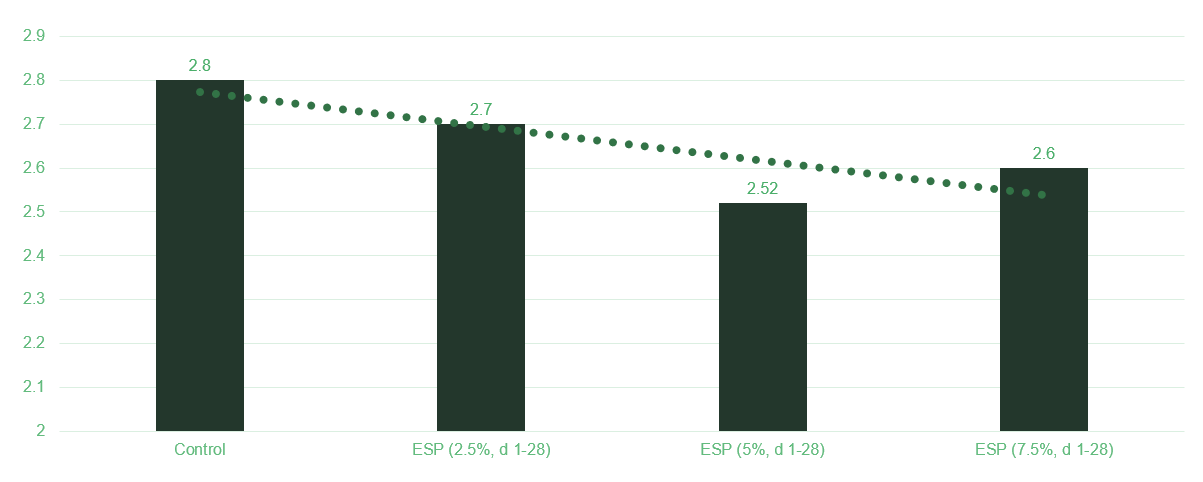

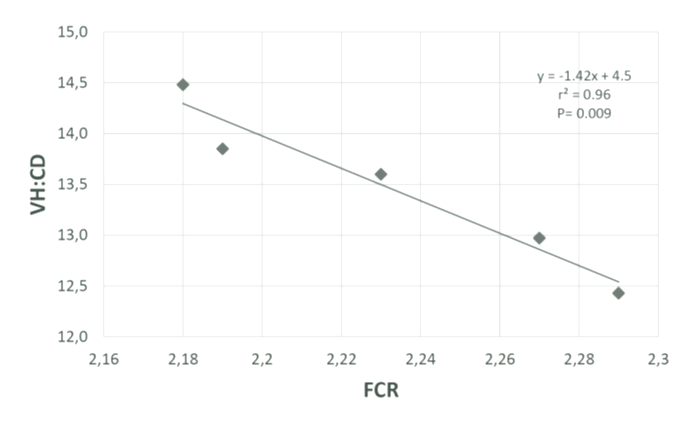
A second experiment at the same university in Vietnam (Thieu et al., 2019) corroborated that the period of feed supplementation with ESP has a significant effect on the gut morphology of colored feathered chickens, the optimal duration of ESP supplementation being from day 1 to day 28 (Table 3).
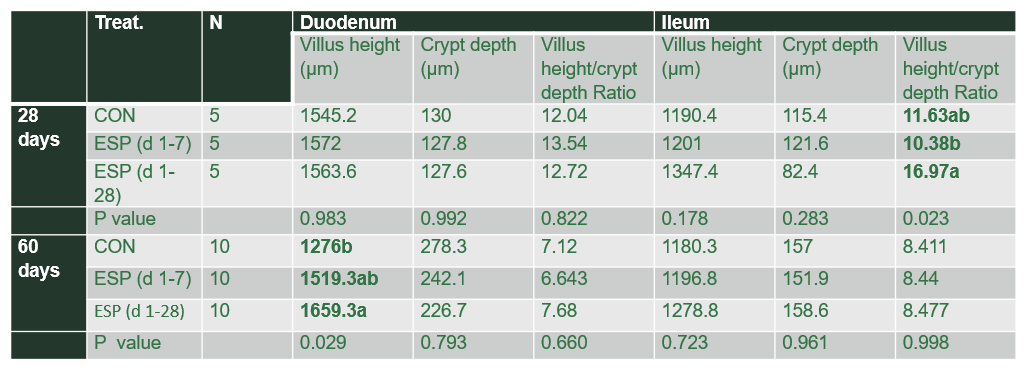
Much more recently, in 2021, again the significant effect of ESP on the intestinal development of colored feathered chickens has been corroborated at Nong Lam University (Figure 5). Furthermore, in this recent trial, the use of ESP in starter diets was shown to increase the uniformity of flock weight compared to a local fermented soy protein.
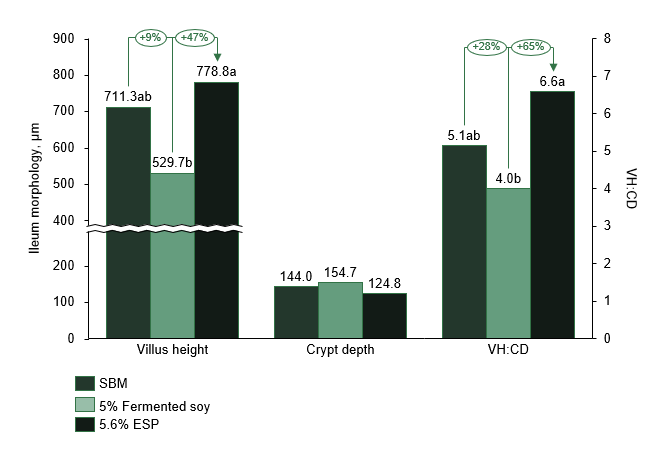
ESP is a very consistent and clean type of protein ingredient (Brown, 20219), as it contains an extremely low content of anti-nutritional factors. The anti-nutritional factors in soybean meal compromise the intestinal health of chickens and their productive performance, especially at early ages (Blanch, 2020a, 2020b). Thus, it is advisable to reduce the soybean meal content to below 30% in chicken starter feed and fill the gap with ESP to meet the protein and amino acid requirements at early ages. A small investment at the beginning of life, results in a noteworthy improvement of the birds’ performance and intestinal health in the overall production cycle.
| References | ||||
|---|---|---|---|---|
| Blanch A. | ||||
| (2020) | Soy trypsin inhibitors do affect the growth and gut health of chickens. | |||
| Blanch A. | ||||
| (2020) | Soy oligosaccharides and beta-conglycinin, behind gut inflammations, wet droppings and footpad dermatitis in chickens | |||
| Blanch A. | ||||
| (2021) | Utilizing a consistent protein ingredient in poultry dietary formulations. | |||
| Thieu et al. | ||||
| (2019) | Effect of enzyme treated soybean meal on intestinal morphology and performance of broilers | Proceedings of the 22nd European Symposium on Poultry Nuterition, Gdansk, Poland, 10-13 June 2019. | ||









